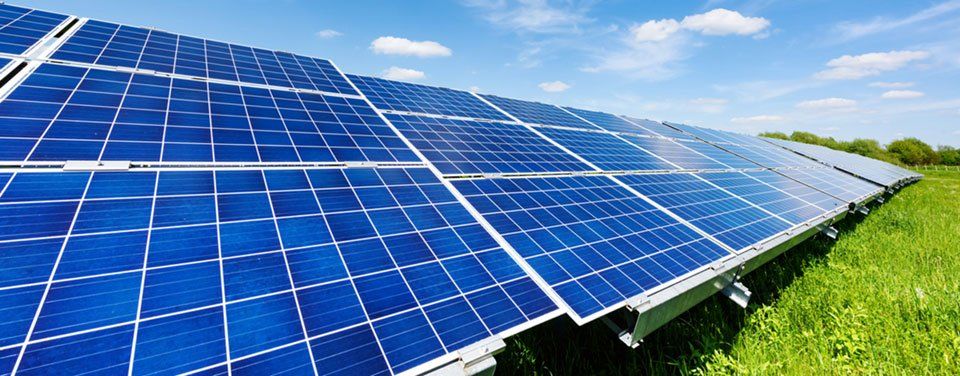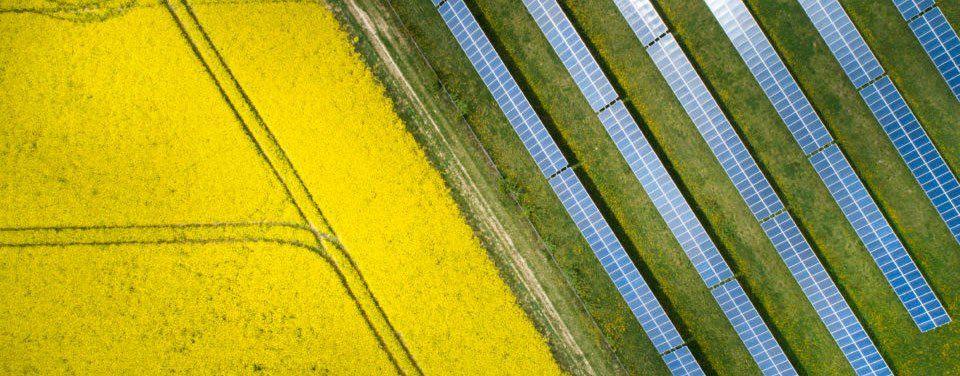Solar Explained
The use of solar power allows local communities to produce energy inside their state and decreases dependence on being a net importer of energy from other states or foreign energy resources. The more solar farms we put into service, the less reliant our communities will become on oil, coal, natural gas and nuclear power.
CHECKED AND APPROVED
The development, construction and operation of a utility-scale solar facility is strictly regulated by a number of different federal, state and local agencies. Each site is carefully evaluated to ensure a safe and environmentally-conscious solar facility. Most states have public agencies that oversee extensive permitting processes that ensure the project has minimal to no impact on the area’s environment, wildlife, soil erosion and historical resources.
WHAT IS SOLAR ENERGY?
Solar energy is measured in megawatts (MW), which looks at the output of energy from a powerplant or the amount of electricity from an entire city. One megawatt is equivalent to providing energy to 250 average households and requires 8-10 acres of land for solar technology (on average). For example, in the regions where Geenex develops, a 20 MW solar facility might occupy 150-200 acres of land and produce enough energy equivalent to approximately 5,000 homes annually.
SOLAR FARMS
Generate clean, renewable energy that has numerous positive impacts on our environment.

SOLAR FACILITIES
Reduce air pollution by offsetting carbon emissions and do not generate greenhouse gases.

SOLAR PANELS
Typically last between 25- 40 years and can be easily recycled.

HOW DOES SOLAR WORK?
A solar panel, or module, is a series of interconnected silicon cells joined together to form a circuit. Crystalline silicon is the second most common element on earth and is used in many forms of technology. Each solar module consists of several solar cells, which are connected in a series to achieve the desired output voltage. When the sunlight hits a solar module, electrons within the silicon are activated and can flow freely. The electron is then pushed into the negatively charged part of the cell and an electrical current is created. A steady flow of electricity then moves from one side of the cell to the other.
RACKING SYSTEMS
Used to install solar panels on surfaces like roofs, building facades or the ground. Racking systems can either be fixed tilt or tracking. Fixed tilt systems are permanently installed in a certain angle toward the sun, require less space and are lower cost. Tracking systems, which are preferred, have a higher cost but more power is produced as they move and follow the path of the sun during the day.
TRANSMISSION
Allows electricity to be transmitted over long distances. Substations convert transmission level voltage to a lower voltage that distribution lines can handle and utility-scale solar facilities larger than 20MW can connect directly to nearby transmission lines or substations.
INVERTER
Changes the direct current (DC) power from the solar modules to alternating current (AC) power.
DISTRIBUTION
Transmits power from the substation throughout the community to the individual business.

Solar energy is derived from sunlight that is converted into direct current (DC) engird by solar panels.

The power from the solar panels is sent to an inverter, which converts DC power to alternating current (AC) power.

The electricity is gathered into transformers and then released into a substation that converts the voltage so it can be distributed to transmission lines.

From there, the generated clean energy is fed into the grid and used by businesses, homes and communities.
Center for Energy Education
Geenex is proud to support the programs of the Center for Energy Education (C4EE), a 501(C)(3) non-profit organization, which brings leading educators and professionals to our communities to provide renewable energy research, educational programs and workforce development training. Through the programs offered by the C4EE, citizens can learn first-hand how the renewable energy sector can bring valuable educational and career opportunities to the community.
center4ee.org
Solar Explained
The use of solar power allows local communities to produce energy inside their state and decreases dependence on being a net importer of energy from other states or foreign energy resources. The more solar farms we put into service, the less reliant our communities will become on oil, coal, natural gas and nuclear power.
CHECKED AND APPROVED
The development, construction and operation of a utility-scale solar facility is strictly regulated by a number of different federal, state and local agencies. Each site is carefully evaluated to ensure a safe and environmentally-conscious solar facility. Most states have public agencies that oversee extensive permitting processes that ensure the project has minimal to no impact on the area’s environment, wildlife, soil erosion and historical resources.
WHAT IS SOLAR ENERGY?
Solar energy is measured in megawatts (MW), which looks at the output of energy from a powerplant or the amount of electricity from an entire city. One megawatt is equivalent to providing energy to 250 average households and requires 8-10 acres of land for solar technology (on average). For example, in the regions where Geenex develops, a 20 MW solar facility might occupy 150-200 acres of land and produce enough energy equivalent to approximately 5,000 homes annually.
SOLAR FARMS
Generate clean, renewable energy that has numerous positive impacts on our environment.

SOLAR FACILITIES
Reduce air pollution by offsetting carbon emissions and do not generate greenhouse gases.

SOLAR PANELS
Typically last between 25- 40 years and can be easily recycled.

HOW DOES SOLAR WORK?
A solar panel, or module, is a series of interconnected silicon cells joined together to form a circuit. Crystalline silicon is the second most common element on earth and is used in many forms of technology. Each solar module consists of several solar cells, which are connected in a series to achieve the desired output voltage. When the sunlight hits a solar module, electrons within the silicon are activated and can flow freely. The electron is then pushed into the negatively charged part of the cell and an electrical current is created. A steady flow of electricity then moves from one side of the cell to the other.
RACKING SYSTEMS
Used to install solar panels on surfaces like roofs, building facades or the ground. Racking systems can either be fixed tilt or tracking. Fixed tilt systems are permanently installed in a certain angle toward the sun, require less space and are lower cost. Tracking systems, which are preferred, have a higher cost but more power is produced as they move and follow the path of the sun during the day.
TRANSMISSION
Allows electricity to be transmitted over long distances. Substations convert transmission level voltage to a lower voltage that distribution lines can handle and utility-scale solar facilities larger than 20MW can connect directly to nearby transmission lines or substations.
INVERTER
Changes the direct current (DC) power from the solar modules to alternating current (AC) power.
DISTRIBUTION
Transmits power from the substation throughout the community to the individual business.

Solar energy is derived from sunlight that is converted into direct current (DC) engird by solar panels.

The power from the solar panels is sent to an inverter, which converts DC power to alternating current (AC) power.

The electricity is gathered into transformers and then released into a substation that converts the voltage so it can be distributed to transmission lines.

From there, the generated clean energy is fed into the grid and used by businesses, homes and communities.
Center for Energy Education
Geenex is proud to support the programs of the Center for Energy Education (C4EE), a 501(C)(3) non-profit organization, which brings leading educators and professionals to our communities to provide renewable energy research, educational programs and workforce development training. Through the programs offered by the C4EE, citizens can learn first-hand how the renewable energy sector can bring valuable educational and career opportunities to the community.
center4ee.org
Corporate Headquarters
Geenex Solar LLC
1000 NC Music Factory Blvd
Suite C3
Charlotte, NC 28206
(980) 237-7926
info@geenexsolar.com
Regional Office
Geenex Solar LLC
525 S Meridian Street | Suite 2B
Indianapolis, IN 46225
info@geenexsolar.com
Ohio Mailing Address
Geenex Solar LLC
6605 Longshore Street | Suite 240
Dublin, OH 43017
info@geenexsolar.com
Geenex Solar LLC
